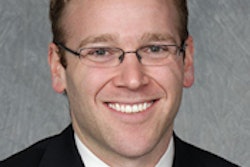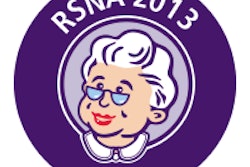
If medical imaging is as ubiquitous as water, can U.S. radiologists still expect to command the price of diamonds? No, according to Dr. Saurabh Jha, who in the New England Journal of Medicine advises radiologists to manage the decline in imaging by taking on the role of gatekeeper in restricting inappropriate utilization.
To Jha, who is from the University of Pennsylvania, the article puts the concept of the changing role of the radiologist on the national healthcare stage (NEJM, July 4, 2013, Vol. 369:1, pp. 5-7). AuntMinnie.com spoke with him about his views on the future role of the radiologist, from being a willing service provider for abundant medical imaging procedures to becoming a questioning gatekeeper guarding against unnecessary utilization.
AuntMinnie: In the article, you make a much different case than others have been regarding the role of the radiologist in managing appropriate utilization. What prompted you to write it?
 Dr. Saurabh Jha from the University of Pennsylvania.
Dr. Saurabh Jha from the University of Pennsylvania.Jha: I've been thinking about the contrast between radiology in the U.K. and in the U.S. since I got to the States 10 years ago. In both countries, radiologists do an admirable job of working within their healthcare systems. But in the U.S., the scrutiny of imaging overuse has been fierce -- we're being told there's just too much imaging being done.
I trained in Britain. In the National Health Service, radiologists get paid a flat salary for their services, regardless of how many imaging exams they read. But imaging was truly a scarce commodity, and radiologists had to act as gatekeepers rather than service providers. To triage effectively, radiologists interacted with referring physicians about the nature of the clinical problem and often denied imaging requests that would not change clinical management.
Here in the U.S., the culture is different. Radiologists are keen to solve clinical problems but do not wish to discuss why the problem needs solving in the first place. It's more like, "If you're not sure about something, we'll help you out" -- service with a smile. It's a bit like the Wolf character in Pulp Fiction working at Starbucks. To borrow a cliché, I think it is the American way.
What's wrong with the service-provider model?
It devalues radiologists and imaging. We are not guest services for the Four Seasons. The more we do, the less we will make a difference by what we do.
I'm working nights right now, dealing with house staff, and I feel I am like a drug dealer, satiating my colleagues' boundless appetite for certainty -- or pseudo certainty.
If imaging is inappropriately abundant, it's going to go down in value, to the point where we may have the situation where imaging is no longer revenue but cost.
The service-provider model doesn't force you to think about the clinical scenario. If there's a 30-year-old patient presenting for the fifth time with atypical chest pain, and an emergency department physician suspects pulmonary embolism (PE), the question isn't "Should we get a ventilation/perfusion scan instead of CT this time?" but "Why do you suspect PE again and again, after so many negative tests?"
You're proposing that radiologists should be gatekeepers rather than consultants. What do you mean, and how would that affect clinical practice?
First, I do think that being a consultant to referring physicians is the first step. You can't deny imaging without having a dialogue and guiding on the best test, which is sometimes "do nothing." But the ultimate decision about whether an imaging exam is necessary at all should be with the radiologist -- which is the gatekeeper's role.
It's unrealistic to expect the culture to change overnight. What needs to happen is radiologists can target certain areas, like inpatient imaging, and act as gatekeepers there. Start with low-risk scenarios: for example, an ultrasound questioned a renal cancer but a CT did not, and the referring physician now wants to order an MRI to resolve the issue. The radiologist can make it clear that the MRI isn't necessary and even write in the patient's notes, "Patient does not need MRI -- this is not renal cancer."
The crucial point is that radiologists need to be consultants first and have the mandate to decline an imaging study. Without that, it's a farce. If the referring physician knows that ultimately he will prevail, that's not gatekeeping, it's marriage counseling.
Of course, the hospital needs to be on board. If the hospital CEO says that gatekeeping imaging is "antipatient," the initiative will be dead on arrival. But the Affordable Care Act will reduce imaging costs, even if it does not reduce the volume, and it would be prudent for radiologists to be one step ahead of that, managing the decline, rather than being managed by the decline.
If radiologists act as gatekeepers, will necessary imaging decrease as well?
Emergency department physicians can't afford to miss certain conditions such as acute coronary syndrome, even if the person is only 30 and at very low risk. You have to apply judgment, but there's a vast swampland of waste in imaging because of what Dr. Bruce Hillman calls the "quixotic quest for certainty."
If a patient is in the intensive care unit with florid pulmonary edema on chest x-ray, but his oxygen saturation has fallen a wee bit and now his doctors want to "rule out" pulmonary embolism, the radiologist can work with them on that. The radiologist can say, "Treat the pulmonary edema more aggressively, and then if that doesn't work, we can talk again," rather than at 9:30 p.m. pulmonary embolism is suspected, at 9:32 p.m. the CT is requested, at 9:41 p.m. the CT is performed, and at 9:42 p.m. the final report -- "Moderate pulmonary edema, no PE" -- is rendered.
We have been making a Herculean effort to shrink that ever-shortening time between a diagnosis entering the prefrontal cortex and the final radiology report, rather than asking why that diagnosis should have been thought of in the first place. The result is that the threshold for suspicion of many conditions has fallen precipitously. Seriously, getting a CT is often easier than pressing the elevator button, and certainly easier than developing a cogent differential diagnosis.
Why is the gatekeeping model important?
Imaging will be gatekept. The question is by whom. Radiologists will increase their relevance by holding the reins.
Excessive imaging is neither in our interest nor in the interest of our patients. Our profession is truly in jeopardy because of rampant imaging. We can't be as ubiquitous as water and expect to command the price of diamonds. No commodity in history has managed that.



















